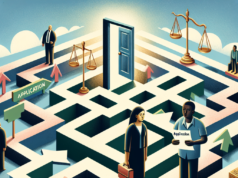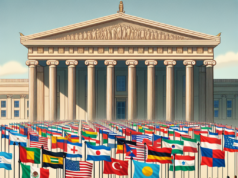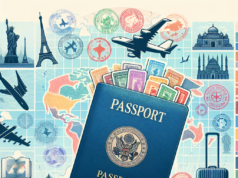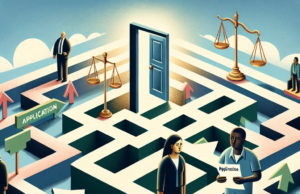
As the United States grapples with a complex and often contentious immigration system, recent proposals for reform have ignited a national debate that underscores the deep divisions within American society. With millions of undocumented immigrants living in the shadows and a growing demand for skilled labor, the urgency for comprehensive immigration reform has never been more pronounced. This article delves into the current landscape of immigration reform, highlights key proposals, examines the political divide surrounding these initiatives, and explores the economic and social implications of potential changes to immigration policy.
Understanding the Current Landscape of Immigration Reform in the United States
The immigration system in the United States has long been a source of contention, characterized by a patchwork of laws and regulations that often fail to address the realities of modern migration. Currently, an estimated 11 million undocumented immigrants reside in the country, many of whom contribute significantly to the economy yet lack legal status. The COVID-19 pandemic has further complicated the situation, revealing vulnerabilities in the labor market and prompting calls for reform that balances humanitarian concerns with national security. As lawmakers from both sides of the aisle recognize the need for change, the conversation has shifted towards finding a comprehensive solution that addresses the needs of immigrants, employers, and the broader society.
Key Proposals: An Overview of Controversial Immigration Reform Initiatives
Among the most discussed proposals for immigration reform are pathways to citizenship for undocumented immigrants, adjustments to visa programs, and enhanced border security measures. One prominent initiative is the DREAM Act, which aims to provide legal status to individuals brought to the U.S. as children, known as “Dreamers.” Additionally, some lawmakers advocate for expanding the H-1B visa program to attract skilled workers in high-demand fields, while others propose stricter enforcement measures to deter illegal immigration. These proposals, however, are often met with fierce debate, as stakeholders weigh the benefits of inclusivity against concerns over security and resource allocation.
The Political Divide: Analyzing Support and Opposition to Reform Proposals
The immigration reform debate is emblematic of the broader political polarization in the United States. Supporters of reform, primarily from the Democratic Party, argue that a humane approach to immigration is essential for economic growth and social justice. Conversely, many Republicans emphasize the need for stringent border security and enforcement measures, viewing immigration as a threat to national sovereignty and public safety. This divide has resulted in legislative gridlock, with attempts to pass comprehensive reform often stalling in Congress. The differing perspectives reflect not only political ideologies but also regional attitudes towards immigration, further complicating the path to consensus.
Economic Implications: How Immigration Reform Affects Labor Markets and Growth
The economic implications of immigration reform are profound and multifaceted. Proponents argue that a more inclusive immigration policy can stimulate economic growth by filling labor shortages in critical sectors such as agriculture, healthcare, and technology. Studies have shown that immigrants contribute significantly to innovation and entrepreneurship, driving job creation and increasing productivity. However, opponents contend that an influx of immigrants may depress wages for low-skilled workers and strain public resources. As the nation faces labor shortages exacerbated by the pandemic, the economic argument for reform becomes increasingly compelling, necessitating a careful examination of how policies can balance the needs of both immigrants and native workers.
Social Perspectives: The Impact of Immigration Policies on Communities and Culture
The social ramifications of immigration policies extend beyond economic considerations, influencing the fabric of American communities and culture. Immigrants enrich the nation with diverse perspectives, traditions, and contributions, fostering a multicultural society. However, restrictive immigration policies can lead to social fragmentation, fear, and mistrust within communities. The rise of anti-immigrant sentiment has been linked to increased hate crimes and discrimination, highlighting the need for policies that promote inclusion and understanding. As communities grapple with the realities of immigration, the challenge lies in fostering dialogue that bridges divides and celebrates the contributions of all residents.
Future Outlook: Navigating the Path Forward for Immigration Reform in America
Looking ahead, the path to meaningful immigration reform remains fraught with challenges, yet the urgency for action is undeniable. As the nation continues to confront labor shortages and demographic shifts, lawmakers must navigate the complex interplay of economic, social, and political factors to forge a path forward. Bipartisan cooperation will be essential to develop comprehensive solutions that address the needs of immigrants while ensuring national security and public welfare. The future of immigration reform in America hinges on the ability to transcend partisan divides and embrace a vision that recognizes the contributions of immigrants as integral to the nation’s identity and prosperity.
===
In conclusion, the debate over immigration reform in the United States reflects a nation grappling with its values, priorities, and identity. As proposals emerge and discussions evolve, it is imperative for policymakers and citizens alike to engage in constructive dialogue that seeks to balance compassion with pragmatism. The outcome of this debate will not only shape the lives of millions of immigrants but will also define the character of American society for generations to come.



























